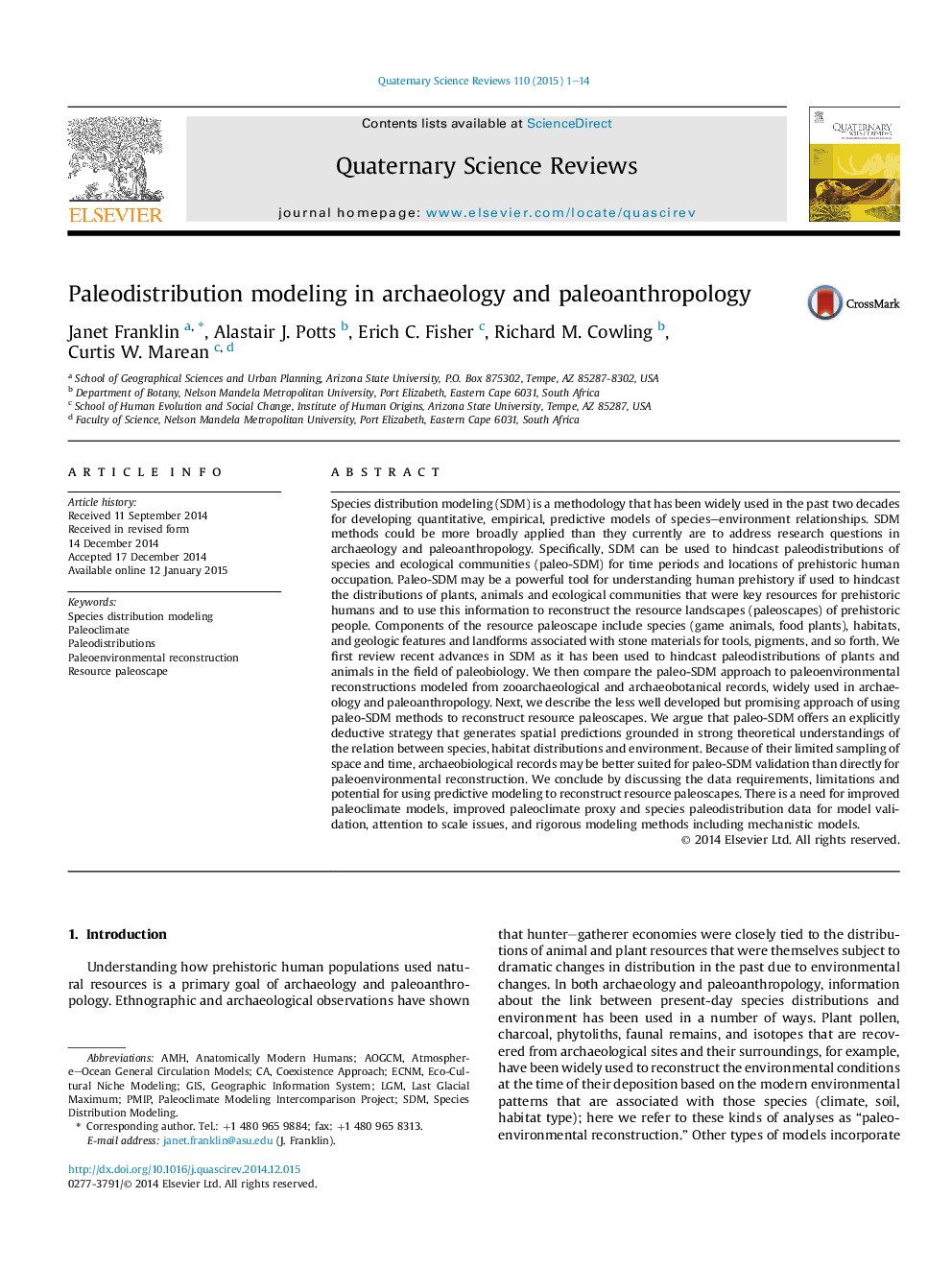| کد مقاله | کد نشریه | سال انتشار | مقاله انگلیسی | نسخه تمام متن |
|---|---|---|---|---|
| 4735891 | 1640824 | 2015 | 14 صفحه PDF | دانلود رایگان |
• Paleo-Species Distribution Modeling (paleo-SDM) can hindcast paleodistributions of species.
• Distributions of species that were key resources for prehistoric humans can be reconstructed.
• Modeling resource paleoscapes can improve understanding in archaeology and paleoanthropology.
• Paleodistribution modeling relies on improved paleoclimate paleoenvironment modeling.
Species distribution modeling (SDM) is a methodology that has been widely used in the past two decades for developing quantitative, empirical, predictive models of species–environment relationships. SDM methods could be more broadly applied than they currently are to address research questions in archaeology and paleoanthropology. Specifically, SDM can be used to hindcast paleodistributions of species and ecological communities (paleo-SDM) for time periods and locations of prehistoric human occupation. Paleo-SDM may be a powerful tool for understanding human prehistory if used to hindcast the distributions of plants, animals and ecological communities that were key resources for prehistoric humans and to use this information to reconstruct the resource landscapes (paleoscapes) of prehistoric people. Components of the resource paleoscape include species (game animals, food plants), habitats, and geologic features and landforms associated with stone materials for tools, pigments, and so forth. We first review recent advances in SDM as it has been used to hindcast paleodistributions of plants and animals in the field of paleobiology. We then compare the paleo-SDM approach to paleoenvironmental reconstructions modeled from zooarchaeological and archaeobotanical records, widely used in archaeology and paleoanthropology. Next, we describe the less well developed but promising approach of using paleo-SDM methods to reconstruct resource paleoscapes. We argue that paleo-SDM offers an explicitly deductive strategy that generates spatial predictions grounded in strong theoretical understandings of the relation between species, habitat distributions and environment. Because of their limited sampling of space and time, archaeobiological records may be better suited for paleo-SDM validation than directly for paleoenvironmental reconstruction. We conclude by discussing the data requirements, limitations and potential for using predictive modeling to reconstruct resource paleoscapes. There is a need for improved paleoclimate models, improved paleoclimate proxy and species paleodistribution data for model validation, attention to scale issues, and rigorous modeling methods including mechanistic models.
Journal: Quaternary Science Reviews - Volume 110, 15 February 2015, Pages 1–14
